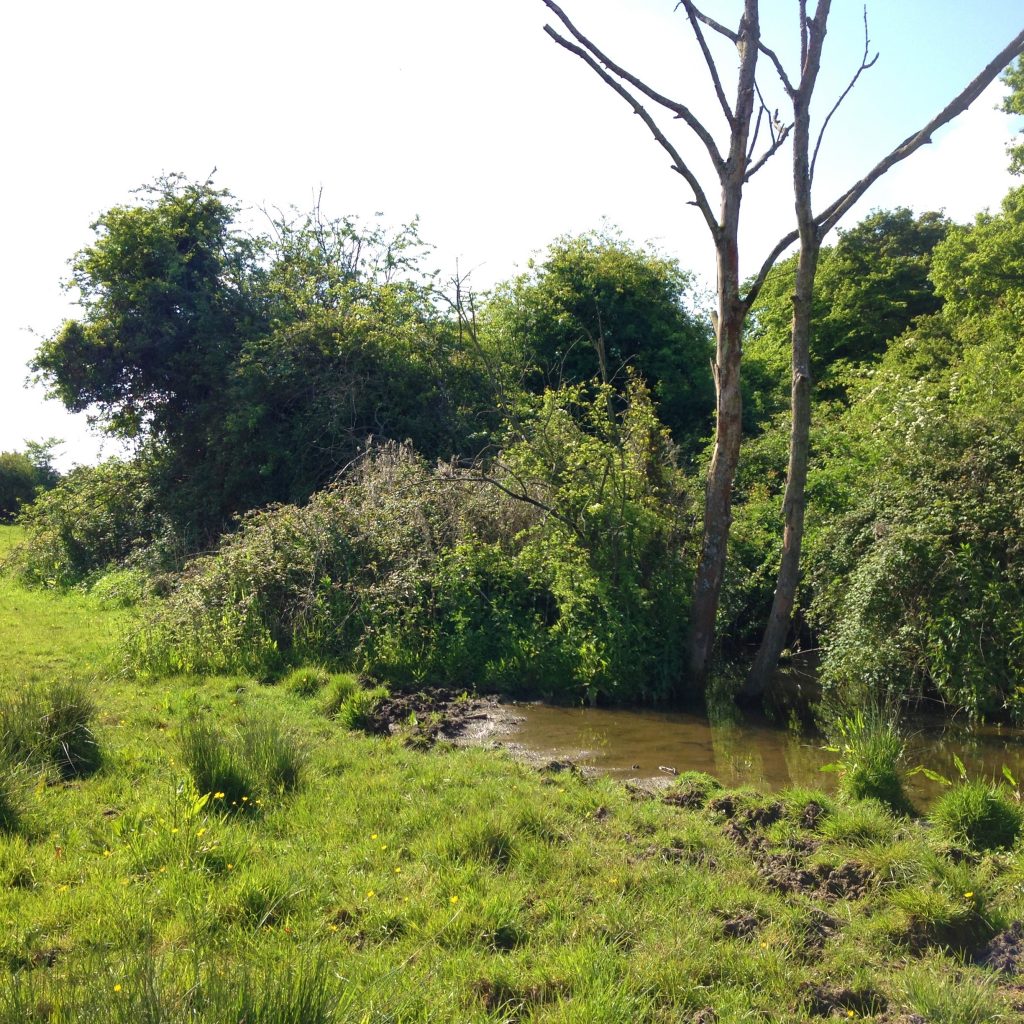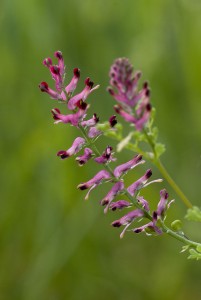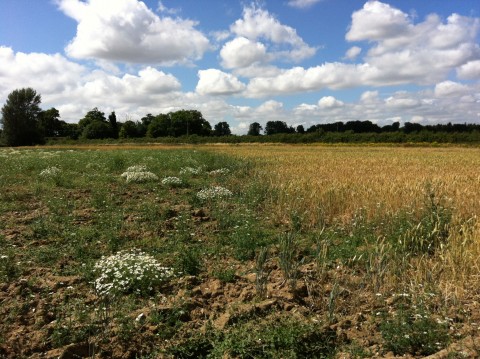Download Helping your local Turtle Doves PDF for a handy guide that outlines how you can provide turtle doves with the habitats they need in the UK.
Turtle Doves feed almost entirely on the ground on the seeds of low growing annual or perennial plants. They need open ground without tall vegetation to find these seeds. Turtle Doves will find and feed in a wide range of locations that fit these criteria, including roadsides and trackways, coastal dune grasslands, short flower rich calcareous grassland. But in many places suitable feeding habitat is lacking, therefore we advocate creating more seed rich habitat. Measures to provide more seed food for Turtle Doves should be located near to suitable Turtle Dove nesting habitat.
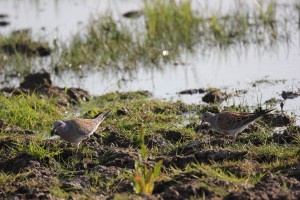
The following methods can be used to provide Turtle Doves with suitable feeding habitat:
- Allow plants to regenerate naturally
- Plant a bespoke seed mix
Allow plants to regenerate naturally
– Cultivate an area of land and allow plants to naturally grow. The plants that grow up may provide seeds for Turtle Doves to feed on. This measure may also benefit rare arable plants that might be present in the seed bank and may establish once the soil is cultivated.
– This is particularly useful on lighter soils and is most beneficial for Turtle Doves if cultivated in the autumn as this then allows for plants to regenerate and set seed early the following summer. However if there is space, providing autumn and spring-cultivated plots will provide a variety of seed across the season.
– On heavy soils, where vegetation can become too dense for Turtle Doves to access the seed, a two-stage cultivation programme can be used to create suitable vegetation structure. An autumn cultivation followed by weed management (if necessary) with a second early spring cultivation, is more likely to deliver suitable habitat with minimal pernicious weed problems.
– Evidence shows that on heavy soils, being patient and retaining your plot in the same location will produce optimum Turtle Dove habitat by gradually reducing nutrient levels. This may take a few years. Cutting and removing vegetation at the end of the season can help achieve this.
Annual management (2-stage cultivation method option)
The dates given here are a guide, please discuss with your local advisor regarding what is appropriate for your site.
– Cultivate the allocated area between 1 August and 1 November each year in order to produce a flush of autumn growth.
– Carry out weed management if necessary by 15 February.
– Carry out a final cultivation to achieve a fine tilth by 15 March. This should produce spring germinating plants such as Knotgrass, Black Bindweed, Chickweed and Fumitory.
– Do not disturb fallow areas until 31 August.
Plant a bespoke seed mix
– In some circumstances, particularly on heavy soils, natural regeneration may be difficult due to excessive plant growth. In these cases, we recommend first speaking to your local Natural England or RSPB advisor to explore how you can make the natural regeneration option work. However, if this is not possible, a sown seed mix can be used as an alternative.
– Sow a specially designed seed mix that will provide Turtle Doves with the right food plants. This will provide a source of food throughout the breeding season. Work with your local advisor to identify the right mix.
– If you are on a site with rare arable plant interest, then this option won’t be suitable.
When and where to sow
– Wildflowers grow better on less fertile soil where it is also easier to maintain 30 60% bare ground.
– For autumn establishment create blocks or 6 m wide (minimum) strips between 1 August and 15 October. Plots should be sown at no more than 6 kg per hectare, and in most cases a much lower rate of 2-3 kg/ha can provide optimal foraging conditions for Turtle Doves. This recommended seed rate is based on recent studies. – Rates may vary with soil type – speak to your local advisor. It should be broadcast, not drilled. Once sown, the area should be rolled.
– Where feasible, establishing multiple plots in autumn and spring will likely increase the range and timing of plants available.
Maintenance
– During the first year, you can top the plots to control the growth of problem weeds during establishment. In following summers, between 15 June and 7 July, half of the plot should be lightly cultivated or as a second choice alternative, cut to 5cm, on a rotational basis, i.e. do not manage the same area in successive years. In all cases check timings of any spring and summer management with your local advisor to protect other wildlife interest.
– Cutting and removal or light cultivation between 1 and 31 September may be required to prevent build up of vegetation.
– With successful establishment and good management and patience these plots can last many years. However, in some cases mixes may need to be re sown every two to three years. If in doubt, contact your local advisor.
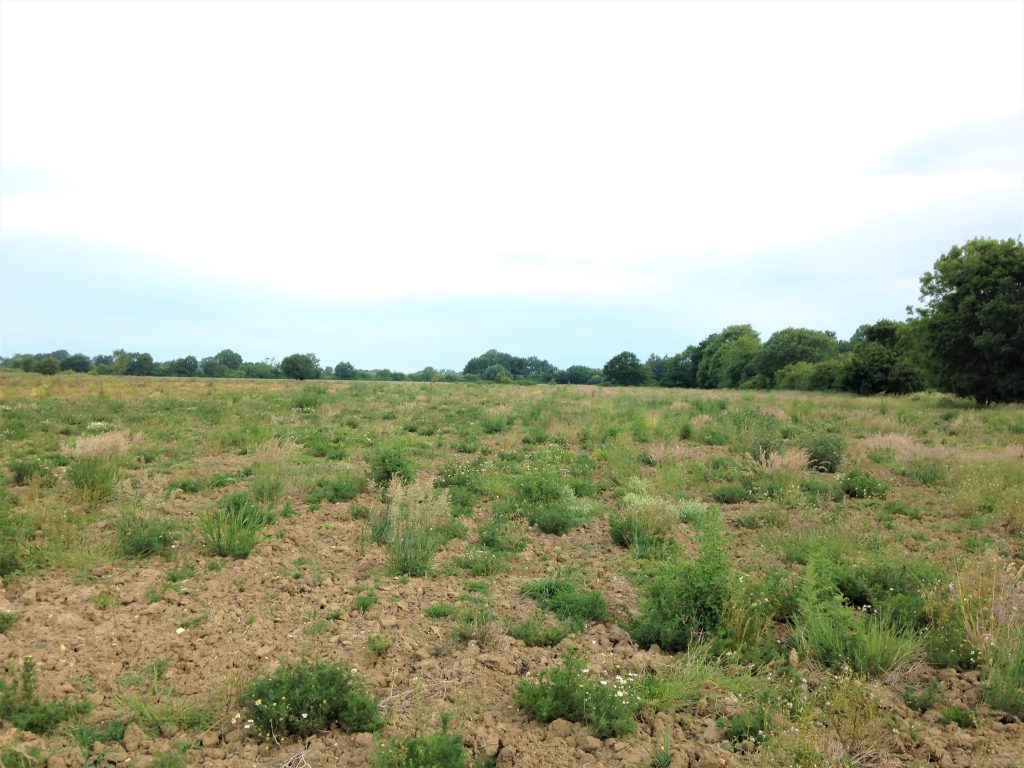
Providing water for turtle doves
– Like many seed-eating animals, Turtle Doves need regular access to drinking water, for instance from ponds, artificially-lined pools, semi-permanent puddles and water courses. Accessible water within 300m of suitable nesting habitat will provide Turtle Doves with a place to drink and bathe.
– Water bodies should be accessible. An exposed, gently sloping side is vital. If not, a partially submerged dead branch is a good substitute. Restoring historic ponds should follow best practice set out in the Guide to the Restoration, Creation and Management of Ponds to ensure that their historic profile is not lost.
– If the local soil structure is not suitable for pond creation, then it is possible to provide other water sources, such as a shallow livestock drinking trough. Care must be taken to ensure this is safe for all wildlife, at a height to prevent access by badgers (in areas with cattle) and the water in the trough is changed periodically to prevent the build up of parasites.
